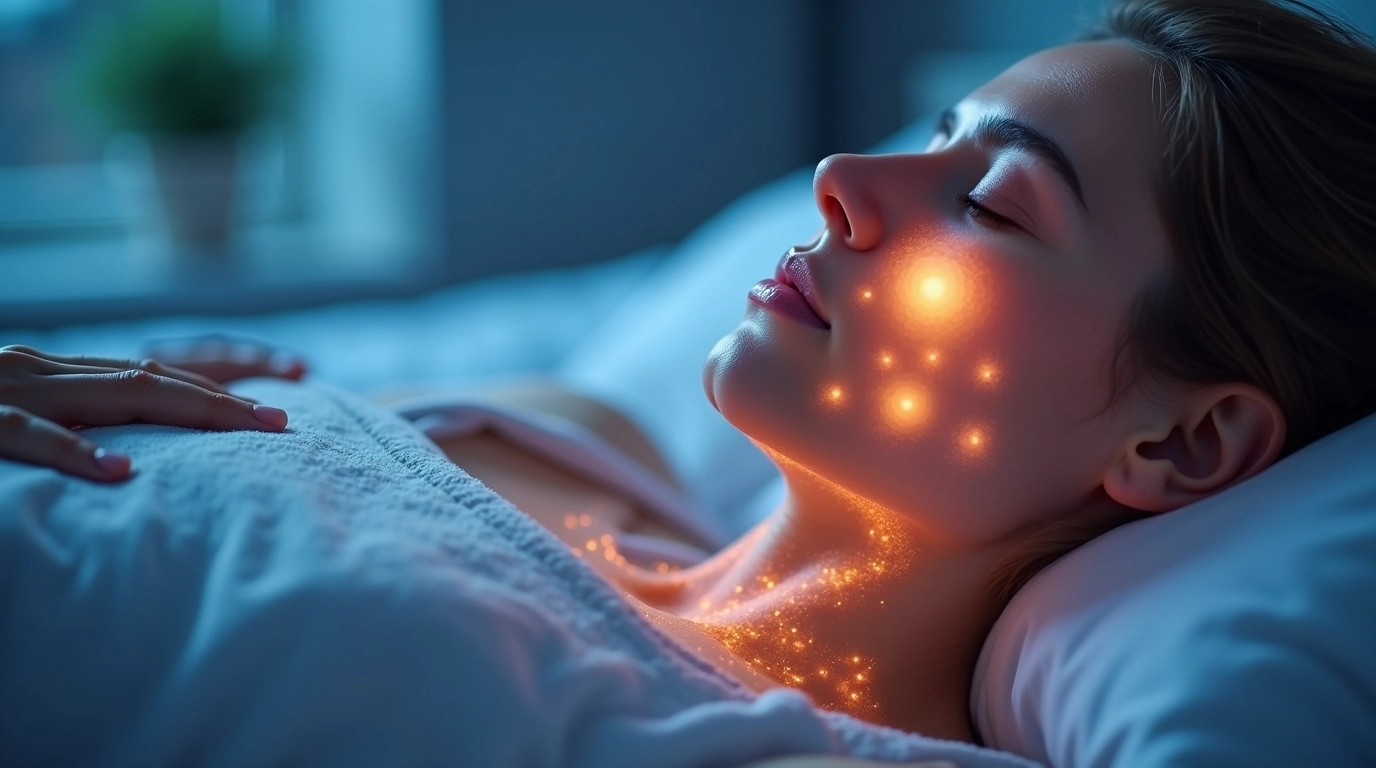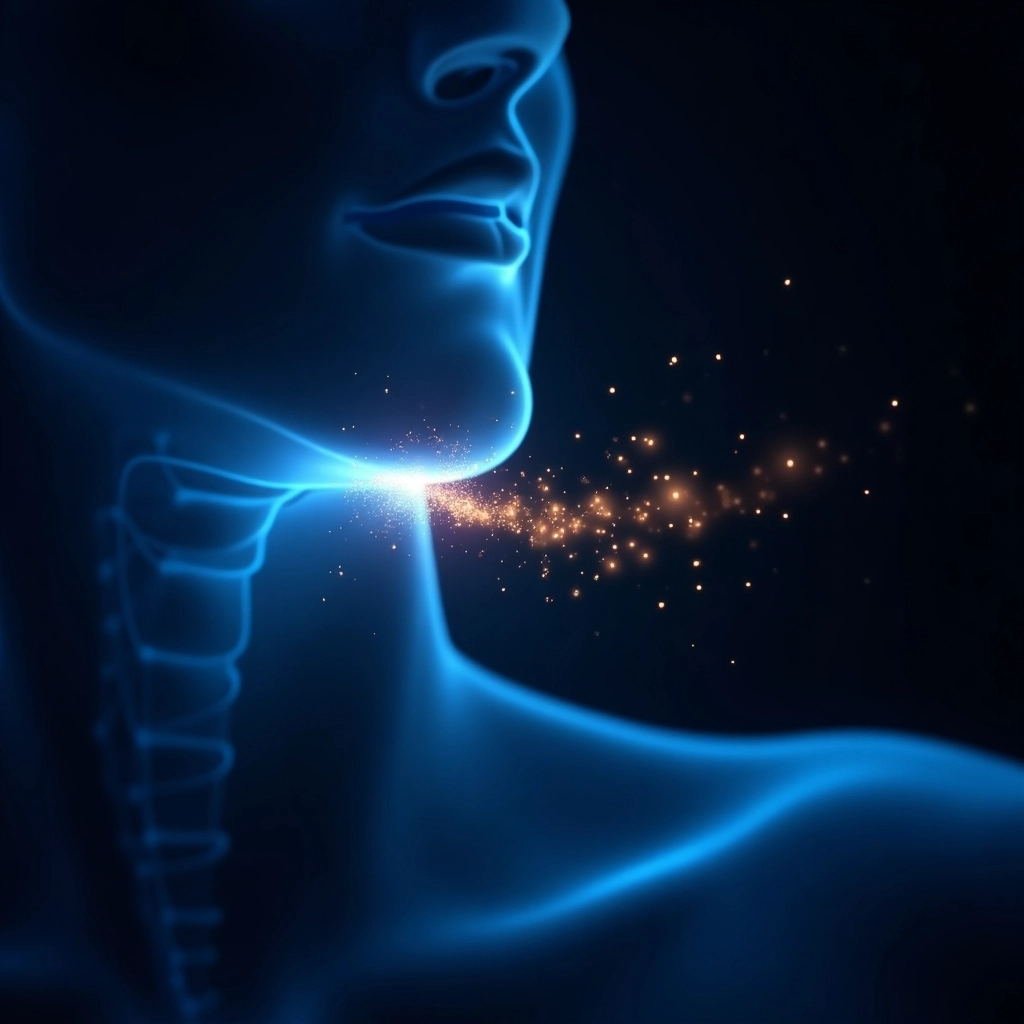Sleep apnea significantly impacts the quality of life for countless individuals, leading to disrupted sleep patterns, daytime fatigue, and a host of associated health complications. An innovative treatment known as hypoglossal nerve stimulation offers a promising solution. This approach works uniquely and provides several notable benefits for individuals with sleep apnea.
What is Hypoglossal Nerve Stimulation (HGNS)?

Hypoglossal Nerve Stimulation (HGNS) is an innovative therapeutic approach designed to manage obstructive sleep apnea (OSA). One of the most recognized devices that delivers this therapy is the Inspire Sleep Apnea treatment.
This treatment involves the implantation of a small device that stimulates the hypoglossal nerve, which controls tongue movement. By activating this nerve during sleep, HGNS helps to prevent airway collapse, thereby improving airflow and reducing apneic events.
The Role of the Hypoglossal Nerve
The hypoglossal nerve, also known as cranial nerve XII, plays a crucial role in the motor control of the tongue.
Its primary function is to innervate the intrinsic and extrinsic muscles of the tongue, facilitating essential movements for speech, swallowing, and mastication.
The nerve's proper functioning is vital for articulating sounds and coordinating food manipulation during digestion.
Who should consider HGNS?
As healthcare providers continue to explore advanced treatment modalities for OSA, HGNS stands out as a significant advancement that could revolutionize the management of this prevalent condition.
By understanding the criteria for HGNS candidacy, patients and their healthcare teams can make informed decisions to improve sleep quality and overall health outcomes.
CPAP Intolerance or Noncompliance
This therapy is especially relevant for individuals who experience CPAP intolerance or noncompliance, which is a common issue among patients.
Many patients find CPAP uncomfortable, leading to poor adherence and, consequently, worsening symptoms of OSA. HGNS offers a promising alternative that may improve adherence and overall quality of life for these individuals.
BMI Restrictions
Potential candidates for HGNS include those who are unable to undergo traditional surgical options due to body mass index (BMI) restrictions. For patients with a higher BMI, surgical interventions may pose higher risks or be deemed inappropriate.
HGNS provides a less invasive solution that circumvents some of the complications associated with obesity while effectively targeting the root cause of airway obstruction during sleep.
Positive Findings on Drug-Induced Sleep Endoscopy (DISE)
Patients who have received positive findings on drug-induced sleep endoscopy (DISE) can also benefit from HGNS. DISE helps identify specific areas of airway collapse during sleep, allowing for a tailored approach to treatment.
The stimulation from HGNS can be especially helpful for people whose airway blockage happens at the base of the tongue, as it stimulates the hypoglossal nerve to move the tongue and keep the airway open while they sleep.
Who shouldn’t consider HGNS?
Hypoglossal nerve stimulation (HGNS) therapy has emerged as a promising treatment option for obstructive sleep apnea. However, it is crucial to recognize that not all individuals are suitable candidates for this innovative intervention.
Specifically, there are certain populations who should exercise caution or outright avoid HGNS due to underlying health conditions that may complicate treatment or diminish its effectiveness.
People Who Suffer From Central Sleep Apnea
Individuals suffering from central sleep apnea (CSA) may not be appropriate candidates for HGNS therapy.
Central sleep apnea is characterized by a failure of the brain to send proper signals to the muscles that control breathing, resulting in periods of disrupted breathing during sleep.
Since HGNS mainly focuses on treating obstructive sleep apnea (OSA) by stimulating the hypoglossal nerve to keep the airway open, it doesn't solve the main problems related to central sleep apnea (CSA).
People Who Suffer From Severe Obesity
Another group that should be cautious about HGNS includes individuals with severe obesity. While some obese patients may benefit from HGNS, those classified as severely obese often face numerous challenges that limit the efficacy of this therapy.
Severe obesity can contribute to an increased degree of airway obstruction and may require more comprehensive treatment approaches, such as weight loss or bariatric surgery, before considering HGNS.
People With Complete Concentric Airway Collapse
Individuals experiencing complete concentric airway collapse represent another population that should be cautious when considering HGNS.
This condition refers to a scenario where the airway collapses uniformly around its circumference during sleep, effectively obstructing airflow.
In these situations, stimulating the hypoglossal nerve might not lead to major improvements because the treatment targets side-to-side airway collapse instead of a round airway collapse.
Those with this condition may require alternative therapeutic approaches that focus on managing the structural and functional aspects of their airway obstruction.
Risks and Side Effects
Hypoglossal Nerve Stimulation (HGNS) is an innovative treatment for obstructive sleep apnea, but it is essential to be aware of the potential risks and side effects associated with the procedure.
Common Side Effects
While HGNS has shown promise in enhancing growth hormone levels, individuals using this treatment should remain vigilant about common side effects.
Open communication with healthcare providers can facilitate better management of these side effects and ensure that patients receive the full benefit of their therapy while minimizing discomfort.
- Tongue Soreness: This discomfort may arise from the direct interaction of the spray with the oral mucosa, as well as from the formulation of the spray itself. Patients often describe a sensation of irritation or burning on the tongue, which can be bothersome but typically resolves after a short duration. Ensuring proper technique while administering the spray can help mitigate this side effect.
- Mild Discomfort at the Implant Site: This discomfort is generally transient and can vary in intensity among individuals. Patients need to monitor their symptoms and report any persistent or severe discomfort to their healthcare provider, as this may necessitate a review of their treatment protocol. In most cases, this mild discomfort does not warrant discontinuation of the therapy but serves as a reminder to follow proper administration guidelines for optimal results.
- Temporary Speech or Swallowing Issues: These can manifest as a feeling of tightness or unease in the throat, which can be particularly concerning for those who rely heavily on clear verbal communication. Such symptoms are often short-lived and resolve once the body adjusts to the hormonal changes induced by the spray. However, if these issues persist, it is imperative to consult a healthcare professional to rule out any underlying complications.
Complications
Addressing these complications often requires a multidisciplinary approach, involving both surgical and medical expertise to ensure optimal patient outcomes and to mitigate the long-term consequences of HGNS-related issues.
- Infection: One of the most notable risks is infection, which can occur at the surgical site or internally, leading to significant morbidity. Infections may arise due to a variety of factors, including poor surgical technique, pre-existing health conditions, or inadequate postoperative care. If an infection develops, it may necessitate antibiotic therapy or even surgical intervention to remove infected tissue or devices, thus complicating the recovery process and potentially leading to additional health issues.
- Lead Displacement: This occurs when the electrodes that deliver stimulation to the nerve become misaligned or migrate from their intended position. Lead displacement can result in suboptimal therapeutic outcomes, as proper stimulation is essential for effective pain relief and hernia repair. Patients may experience a resurgence of symptoms due to this misalignment, prompting the need for further surgical procedures to reposition the leads correctly.
- Device Malfunction: Device malfunction is another potential complication that can arise with HGNS. Malfunctions may stem from technical issues with the device itself or from external factors such as patient activity levels. When a device malfunctions, it can lead to a decrease in effectiveness, resulting in inadequate symptom management for the patient.
Managing Side Effects
Managing side effects of High-Grade Neoplastic Syndromes (HGNS) is a critical aspect of patient care that requires a multidisciplinary approach.
- Adjustments Through Titration: Titration, the process of gradually adjusting the dosage of medications, is often employed to find the optimal balance between efficacy and tolerability. This method allows healthcare providers to tailor treatments to individual patient needs, ensuring that side effects are minimized while therapeutic benefits are maximized.
- Medication or Minor Procedures: Effective medication management is crucial in addressing the various side effects that patients may experience. This can include the use of anti-nausea medications, pain relief options, or other supportive therapies aimed at mitigating symptoms. Furthermore, minor procedures may be indicated to manage specific complications arising from HGNS. These interventions can range from drainage of fluid collections to surgical options aimed at alleviating obstructions or other mechanical issues.
Lifestyle, Daily Use, and Monitoring

The lifestyle adjustments and daily use of HGNS involve integrating the device into a patient’s routine, ensuring it is activated during sleep for optimal effectiveness.
How to Use the Device Nightly
Effectively using the HGNS device nightly involves mastering the external remote control operation and establishing a timed regimen for stimulation onset and shut-off.
By doing so, users can optimize their treatment experience, ensuring that they receive maximum benefit while maintaining comfort and ease of use throughout the night.
- External Remote Control Operation: To ensure optimal performance and comfort, it is essential to familiarize yourself with the external remote control operation. Begin by reviewing the user manual for specific guidance on the device's functions, including how to turn the device on and off, adjust stimulation intensity, and set programmable modes. The remote control typically features a user-friendly interface that allows you to easily navigate through the settings.
- Stimulation Onset and Shut-Off Timing: Timing is crucial when it comes to stimulation onset and shut-off. It is generally advisable to establish a consistent nightly schedule, as this promotes routine and maximizes the effectiveness of the therapy. For many users, starting stimulation at a time that aligns with their wind-down routine—such as 30 minutes before bedtime—can enhance relaxation and prepare the body for sleep. Likewise, setting an automatic shut-off time will ensure that the device operates for the desired duration without requiring manual intervention.
Maintenance and Support
Maintaining optimal performance of the HGNS requires a comprehensive approach encompassing battery management, troubleshooting skills, and leveraging technology through app-based tools.
By prioritizing these areas, users can ensure that their navigation system remains reliable and efficient, ultimately enhancing their overall experience.
- Battery Life and Replacement: Regular monitoring of battery health is essential, as a declining battery can lead to reduced functionality and reliability of the navigation system. Users should be aware of the manufacturer's guidelines regarding battery lifespan and replacement intervals. Proactive measures, such as keeping the device charged and using it within recommended operating conditions, can significantly extend battery life. When replacement becomes necessary, utilizing genuine batteries ensures compatibility and performance, safeguarding the integrity of the HGNS.
- Troubleshooting and App-Based Tools: Users may encounter various issues, from software glitches to hardware malfunctions. A systematic approach to troubleshooting can help identify and rectify these problems efficiently. Familiarizing oneself with the user manual and accessing customer support resources can expedite the resolution process. Furthermore, utilizing app-based tools for diagnostics and updates can enhance user experience, allowing for real-time monitoring of system performance and timely software updates that address known issues.
Comparison to Other Sleep Apnea Treatments
The treatment landscape for sleep apnea has evolved significantly over the years, with various options tailored to meet the specific needs of patients.
| Treatment Option | Description | Efficacy |
|---|---|---|
| CPAP Therapy | CPAP machines deliver a steady flow of air through a mask to keep the airway open during sleep. | Widely regarded as the gold standard for treating moderate to severe OSA. |
| Oral Appliances | Oral appliances are custom-fitted devices designed to reposition the jaw and tongue to maintain an open airway. | Can be effective for mild to moderate sleep apnea, but their efficacy is often limited compared to HGNS and CPAP. |
FAQs
Is hypoglossal nerve stimulation painful?
While the procedure itself involves the implantation of a device, most patients report minimal discomfort during the process. Post-operative pain is typically manageable with standard analgesics, and many individuals experience only mild soreness at the incision site.
How long does the device last?
The hypoglossal nerve stimulation device is designed for long-term use, typically lasting approximately 7 to 10 years. This duration can vary based on individual patient factors and adherence to care protocols.
Can I have an MRI with the device?
Generally, it is essential to consult with your healthcare provider and the manufacturer of the device to determine if an MRI is safe. Some hypoglossal nerve stimulation devices are MRI-compatible, allowing for imaging under specific conditions.
What happens if I gain weight after implantation?
If you gain weight after the implantation of a hormonal gestational neural stimulation (HGNS) device, it is essential to consult with your healthcare provider. Weight gain can occur due to various factors, including hormonal changes, dietary habits, and physical activity levels.
Conclusion
The hypoglossal nerve stimulator represents a significant advancement in the treatment for people with sleep apnea obstructive sleep apnea. By targeting the hypoglossal nerve, this innovative therapy facilitates airway patency during sleep, thereby enhancing patient outcomes.
HGNS has demonstrated its effectiveness in reducing apnea-hypopnea indices and improving quality of life for individuals who may not benefit from traditional interventions.
As HGNS continues to gain acceptance, ongoing research will be essential to further refine its applications and optimize patient selection, ultimately contributing to better management strategies for sleep-disordered breathing.
Karen Barnard
Karen is a Human Movement Science expert and a certified sports nutrition and massage therapist. At Sleepiverse, she combines her passion for human movement science and sleep health to educate herself and her readers about healthier sleep. In addition to writing articles, Karen manages a fitness studio offering private training, athletic conditioning, and sports massage therapy. She focuses on providing people with a holistic environment for people to reach their health goals, often incorporating stretch therapy to promote mental tranquillity and help people improve their sleep.


